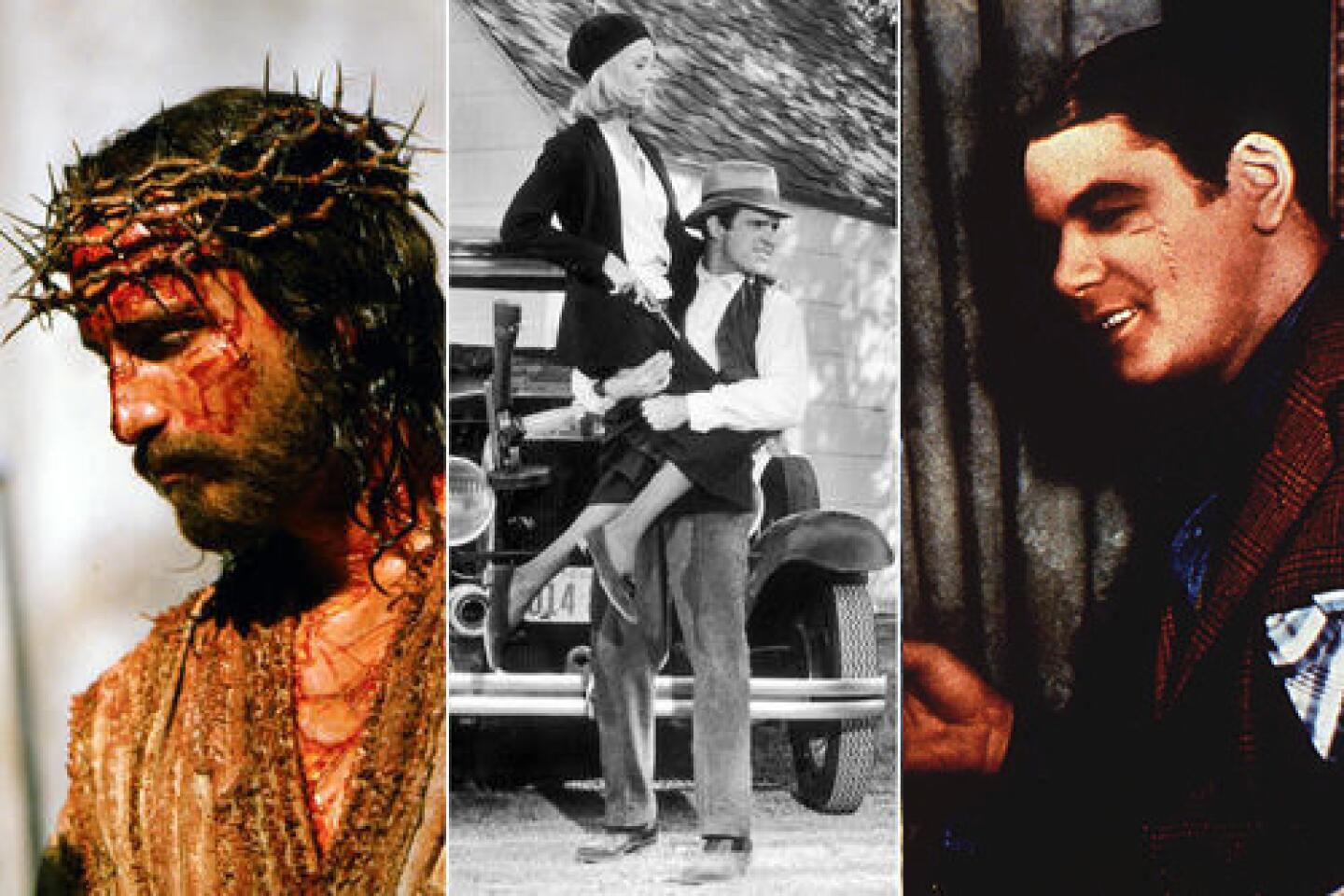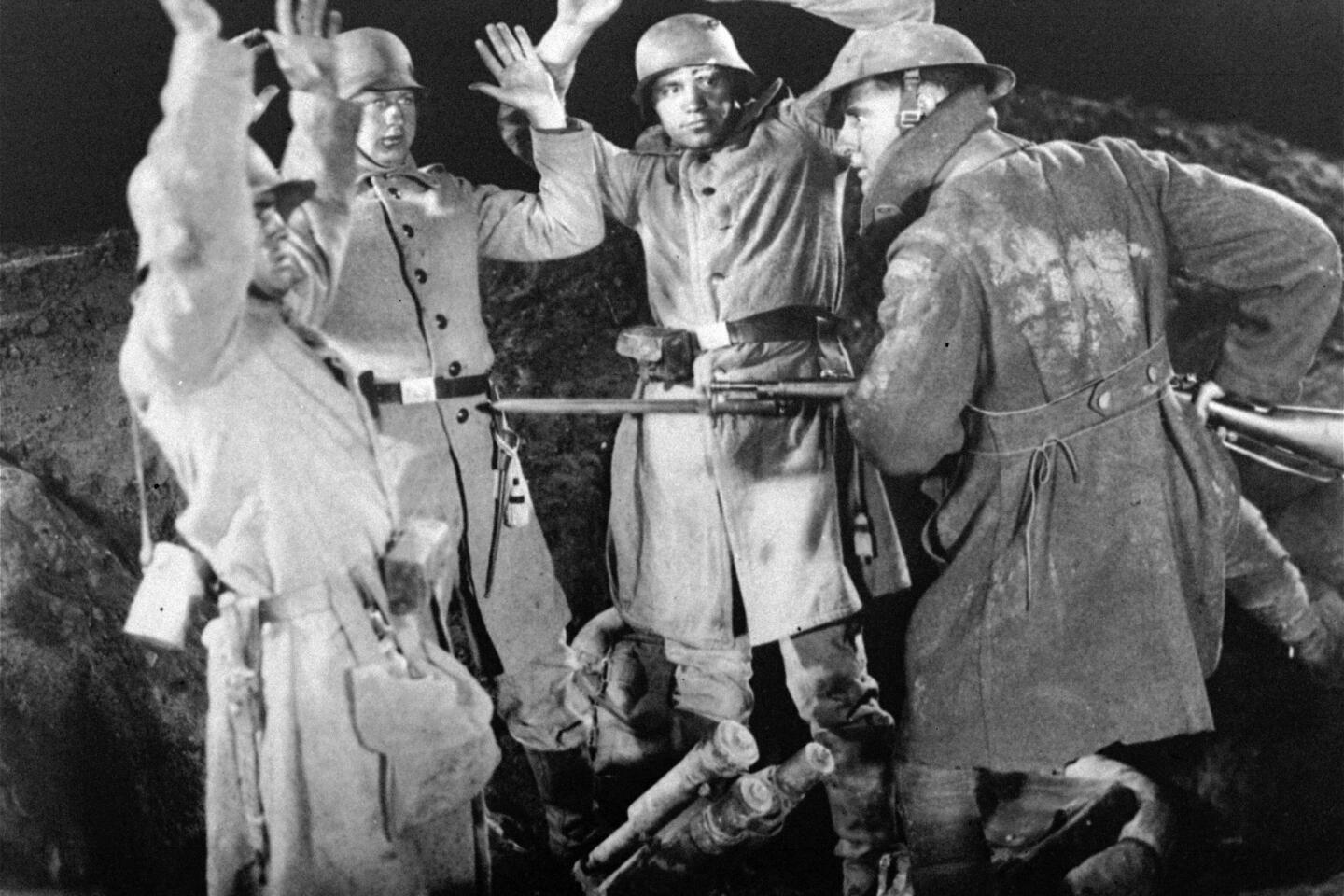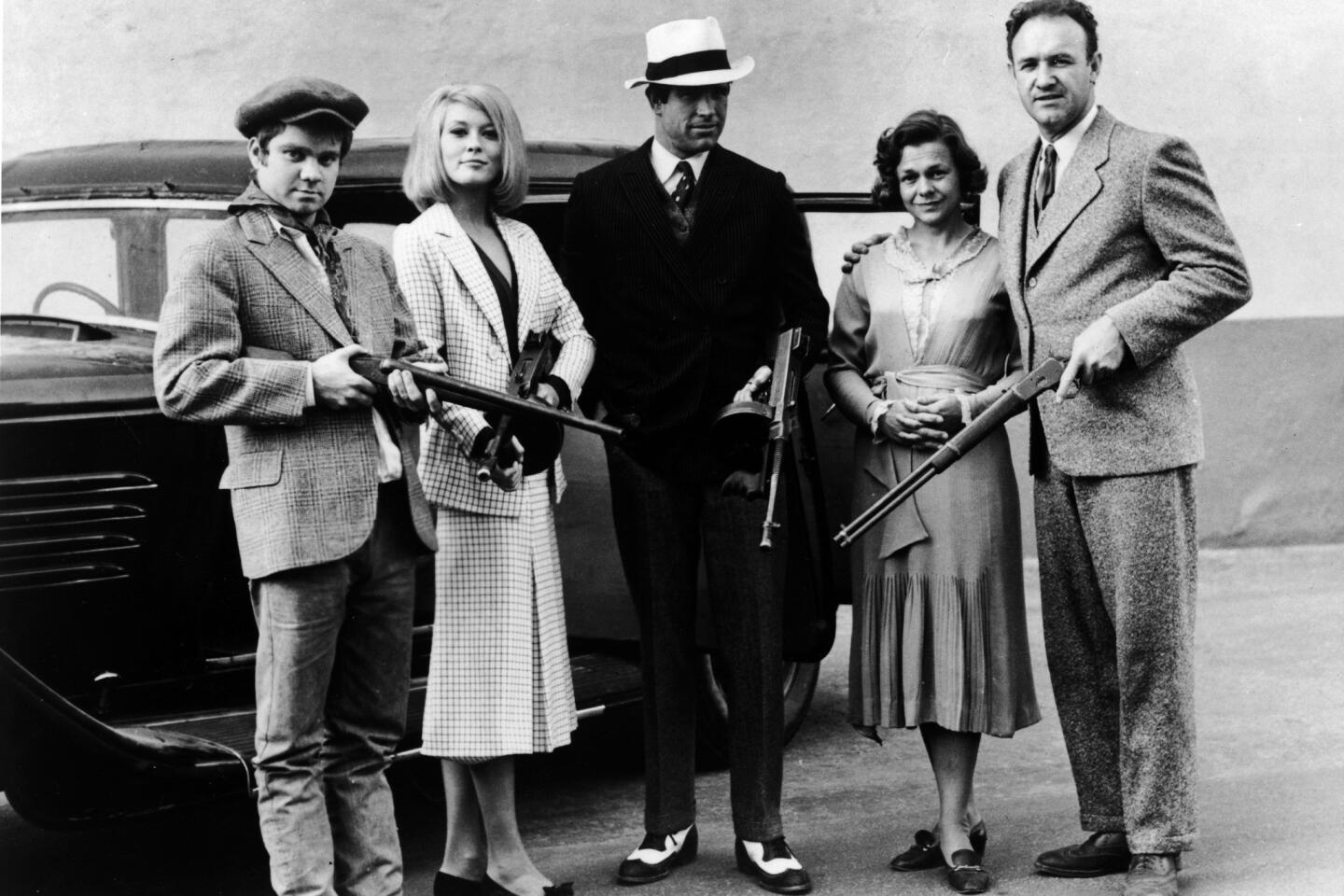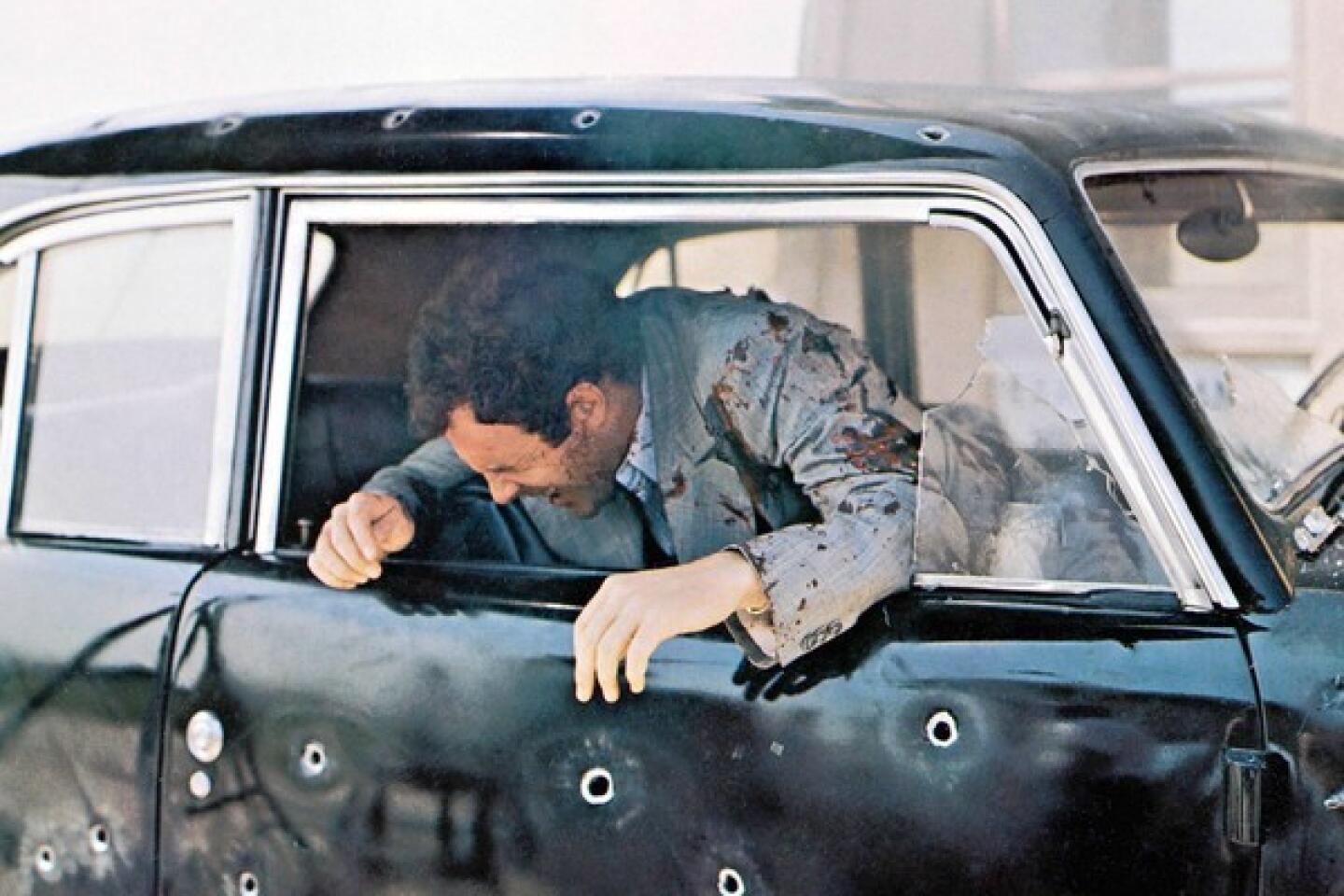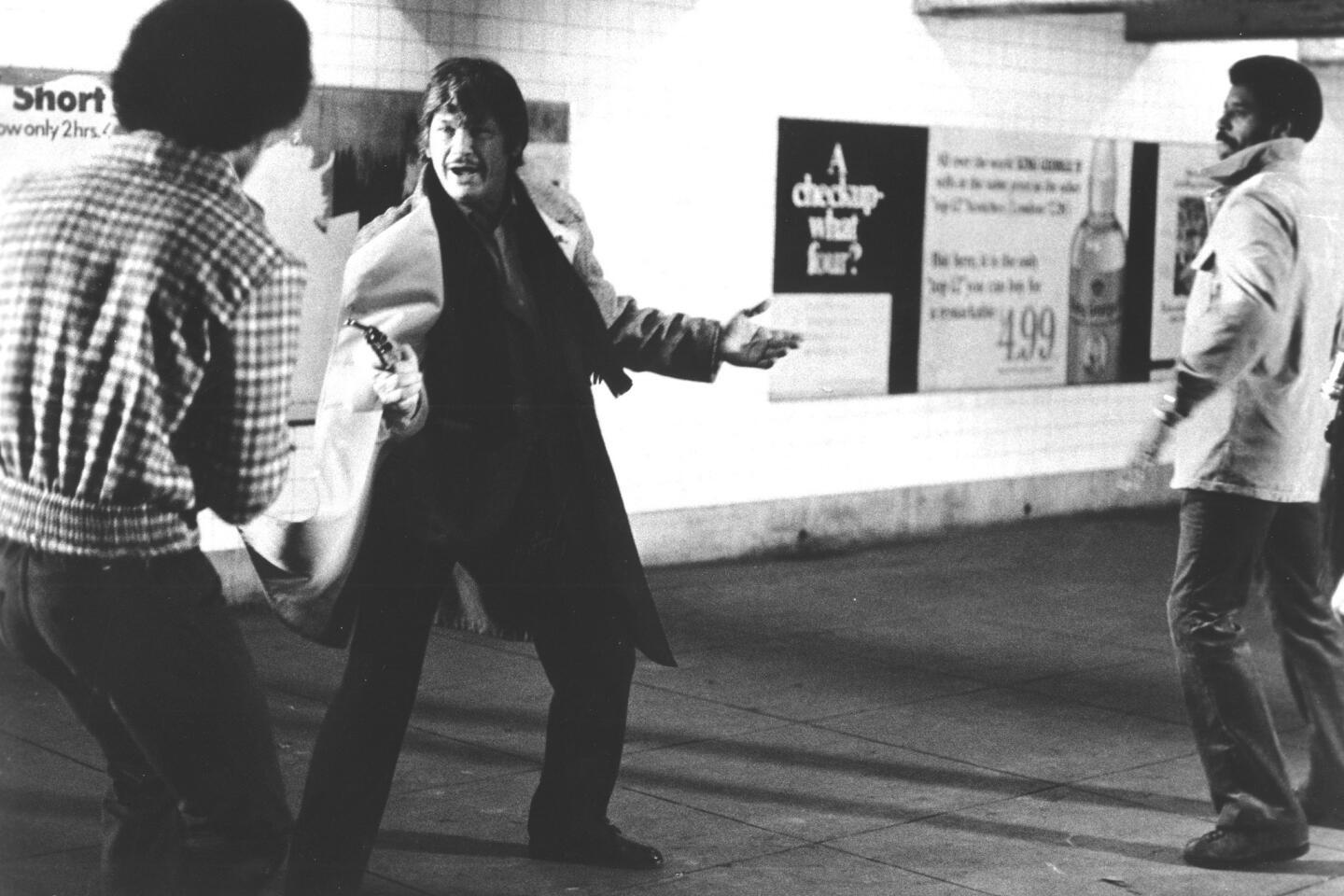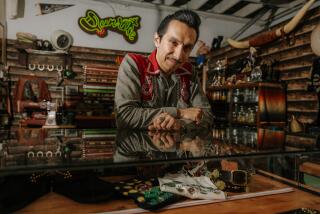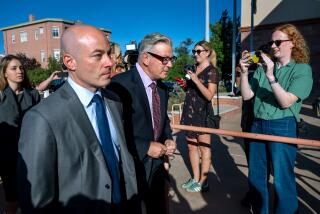Larry Zanoff’s aim: Teach actors to bear arms for the film’s sake
For Larry Zanoff, the armorer who lent Quentin Tarantino’s “Django Unchained” its firepower, fake blood can be a serious occupational hazard.
“The gun gets splattered with fake blood,” he said. “Now it’s all gummed up; it doesn’t want to work anymore. That’s why we had backup guns, multiples and multiples of them.”
Zanoff, 48, has never had a shortage of guns in his life. The son of a defense industry engineer who was also a competitive rifle shooter, Zanoff showed at age 6 an aptitude for disassembling his father’s firearms.
Raised in Philadelphia and Haifa, Israel, Zanoff spent 41/2 years in the Israeli military during the first Lebanon war before returning to the United States. He earned a degree in law enforcement and the administration of justice from Cabrillo College in Aptos, Calif., worked for the Santa Cruz Police Department and in private security, studied gunsmithing at Lassen Community College in Susanville, Calif., and spent five years at Calico Light Weapons Systems, a weapons factory formerly in Bakersfield.
About 14 years ago, someone in the film industry needed an expert gunsmith with knowledge of automatic and military-style weapons, and gave Zanoff a call. Since then, he’s served as a Hollywood armorer on dozens of movies, including “Gangster Squad,” “Iron Man 2” and “Savages.”
Now, as a member of the weapons department of Sunland-based Independent Studio Services, he works with directors and property masters to select, prepare and modify guns before bringing them to the set. He makes sure the guns function properly, trains the actors how to use them, assists with weapons-related choreography and enforces the film industry’s strict safety regulations.
THE CULTURE OF VIOLENCE: Art | Film | Television | Hollywood
Remington steel: The two main actors on “Django Unchained,” Christoph Waltz and Jamie Foxx, used modern reproductions of the Remington 1858 percussion cap revolver. “You wouldn’t want to use an over-100-year-old gun where it might fail on you,” said Zanoff. “There’s also a safety concern, because back then, the steel wasn’t as good as it is right now.” But the modern reproductions still require old-fashioned skills. “Back then, you had to load loose powder in, and then you put a lead ball in, and then you put a little percussion cap over a little nipple in the cylinder. And you can see that when there are close-ups of the guns, and there are a lot of them in the movie.”
Blank expression: Shooting blanks isn’t as easy as it sounds. In an ordinary gun, a hammer crushes a primer, which creates a spark to ignite the gunpowder, which releases gasses that build pressure behind the projectile, which ultimately causes the gun to fire. In a gun that shoots blanks, there’s no projectile, and “a lot of guns rely on the buildup of pressure behind the projectile to actually function the mechanism,” explained Zanoff. “So we have to create an altered mechanism so it will run on blanks. Everybody has their own way of blanking things, and it’s not a science. It’s truly an art form.”
Nonstandard issue: The guns had to be further modified for the quick-draw scenes in “Django Unchained” so actors wouldn’t cut their hands. “A quick-draw gun is not an off-the-shelf gun, because guns tend to have sharp edges on them and rough surfaces on them,” said Zanoff. “So we spent many hours on each and every gun: customizing it, doing trigger jobs. ‘Dehorning’ is what it’s called where you knock the sharp edges off of it. If you’re trying to do something quickly and smoothly and fast, you want a polished, smooth action.”
THE CULTURE OF VIOLENCE: Video Games | World Cinema | On-screen history | Theater | Research
Something old: For two other recent films, Zanoff supplied actual antique weapons. “The Last Stand” features “a World War I water-cooled, belt-fed Vickers British machine gun — the kind of thing that you see mounted in World War I biplanes,” he said. The 1930s and 1940s firearms in “Gangster Squad” included classic Thompson submachine guns with 50-round drums. When it comes to quickly loading them between takes on set, “It’s not like you just take 50 rounds and dump it in a Ziploc bag,” said Zanoff. “They’ve got to be loaded individually in the right order and in the right progression, otherwise the gun jams. It’s about having the people who know how to do that, getting everything preloaded and being Johnny on the spot, as it were. That’s what happens when you have professional people who do the prep the way it’s supposed to be done.”
Gun violence: When it comes to the political debate over whether the violence he helps bring to the screen increases violence on the streets, Zanoff stays out of it. But he can speak about his own experience. “Obviously, I grew up all my life around guns, and I’ve never been involved in horrible atrocities and things that might be out there in the news,” he said. “I think the use of the gun is more important than the gun itself. The gun’s an inanimate object.”
More to Read
From the Oscars to the Emmys.
Get the Envelope newsletter for exclusive awards season coverage, behind-the-scenes stories from the Envelope podcast and columnist Glenn Whipp’s must-read analysis.
You may occasionally receive promotional content from the Los Angeles Times.
